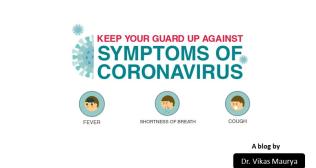
Struggling to Breathe While Sleeping? Try These Proven Sleep Positions
A good night's sleep is one of the pillars of a healthy life. It’s a time for our bodies and minds to rest, recharge, and repair. But for many people, the simple act of lying down to sleep can trigger a distressing struggle for breath. Waking up gasping for air or feeling a constant shortness of breath at night can turn a period of rest into a source of anxiety and fatigue. This common issue can be caused by a range of conditions, from a simple cold to more chronic problems like sleep apnea or acid reflux.
While medical treatment is essential for addressing the root cause, many people are surprised to learn that a simple, immediate change can make a world of difference: adjusting their sleeping position. The way you position your body at night can either open up your airways or constrict them. This guide will explore the best position for breathing difficulties and explain how you can find more comfortable sleeping positions for a restful, breathable night.
Why Can Breathing Be Difficult at Night?
Before we explore solutions, it’s helpful to understand why breathing problems often worsen when we lie down. Gravity plays a major role. When you're upright, your airways are naturally open. When you lie flat, gravity can cause the tissues in your throat and tongue to relax and fall backward, narrowing the passage for air. This is a key factor in conditions like obstructive sleep apnea. Furthermore, lying flat can allow stomach acid to flow back into the esophagus, causing the irritation and coughing associated with acid reflux (GERD).
The Positions to Avoid
For most people with breathing issues, sleeping flat on the back is the least effective position. It allows for the maximum effect of gravity on the airway, potentially worsening snoring and sleep apnea. Similarly, sleeping on your stomach can be problematic as it can restrict the movement of your diaphragm and requires you to turn your head to the side, which can strain your neck and misalign your airway.
The Best Sleeping Position for Shortness of Breath: Side Sleeping
The consensus among sleep experts and doctors is that sleeping on your side is generally the best position for breathing difficulties. Side sleeping helps keep the airways open by preventing the tongue and soft palate from collapsing into the back of the throat. This simple change can significantly reduce breathing problems related to snoring and mild sleep apnea.
But this leads to a very common and important question: which side is better to sleep on?
- Sleeping on Your Left Side: For many conditions, the left side is often recommended. This position is particularly beneficial for people with acid reflux because it places the stomach below the esophagus, making it harder for stomach acid to travel upward. Some studies also suggest that sleeping on the left side can improve circulation and put less pressure on the heart.
- Sleeping on Your Right Side: While the left side often gets more praise, sleeping on your right side is still far superior to sleeping on your back or stomach. It keeps the airways open effectively. However, for individuals who suffer from heartburn, this position might worsen their symptoms.
Ultimately, the answer to which side is better to sleep on may come down to personal comfort. The key is to choose a side and stick with it. To make side sleeping even more comfortable and effective, try placing a pillow between your knees. This helps align your hips and spine, reducing strain on your back and making it one of the most comfortable sleeping positions you can adopt.
The Power of Elevation: Propping Yourself Up
Another highly effective strategy is to sleep with your head and upper body elevated. This is often the best sleeping position for shortness of breath caused by conditions like heart failure, COPD, or severe nasal congestion. Elevating your head uses gravity to your advantage, helping to:
- Keep your airways open.
- Allow sinuses to drain more effectively.
- Prevent stomach acid from rising into your throat.
How can you achieve this elevation?
- Use a Wedge Pillow: A foam wedge pillow is specifically designed to provide a gradual, stable incline for your entire upper body. This is generally more effective and better for your neck alignment than simply stacking regular pillows.
- Invest in an Adjustable Bed: An adjustable bed frame allows you to raise the head of the bed to the perfect angle with the touch of a button, providing consistent support throughout the night.
How to Reduce Breathing Problem at Night: A Summary
Finding the right position is key, but you can also make other adjustments to improve your nighttime breathing.
- For Sleep Apnea: Side sleeping is crucial. If you tend to roll onto your back, you can try placing pillows behind you to prevent it.
- For Nasal Congestion: Sleeping with your head elevated is the best approach to help sinuses drain. Using a humidifier in your bedroom can also help by adding moisture to the air.
- For Acid Reflux (GERD): Sleeping on your left side with your head slightly elevated is the ideal combination to keep stomach acid down.
- For COPD or Asthma: Many people find that sleeping propped up in a recliner-like position provides the most relief.
Finding Your Comfort Zone
There is no single magic position that works for everyone. The best approach is to experiment with these recommendations to find what feels most comfortable and provides the most relief for you. By making a few simple adjustments to how you sleep, you can significantly improve your ability to breathe freely and deeply throughout the night. If your breathing problems persist despite these changes, it is essential to consult a doctor to diagnose and treat the underlying cause.
Frequently Asked Questions
1. Why do I feel short of breath only when I lie down?
Ans. This is often due to gravity's effect on your airways, tongue, and internal organs. It can also be a sign of conditions like heart failure or acid reflux, which are worsened by a flat posture.
2. Can losing weight help with breathing problems at night?
Ans. Yes, for many people, especially those with sleep apnea, losing excess weight can significantly reduce pressure on the airways and improve or even resolve nighttime breathing issues.
3. Is it bad to sleep with too many pillows?
Ans. While elevating your head is good, stacking pillows incorrectly can bend your neck forward, actually worsening airflow. A wedge pillow or an adjustable bed provides better, more ergonomic support.



















